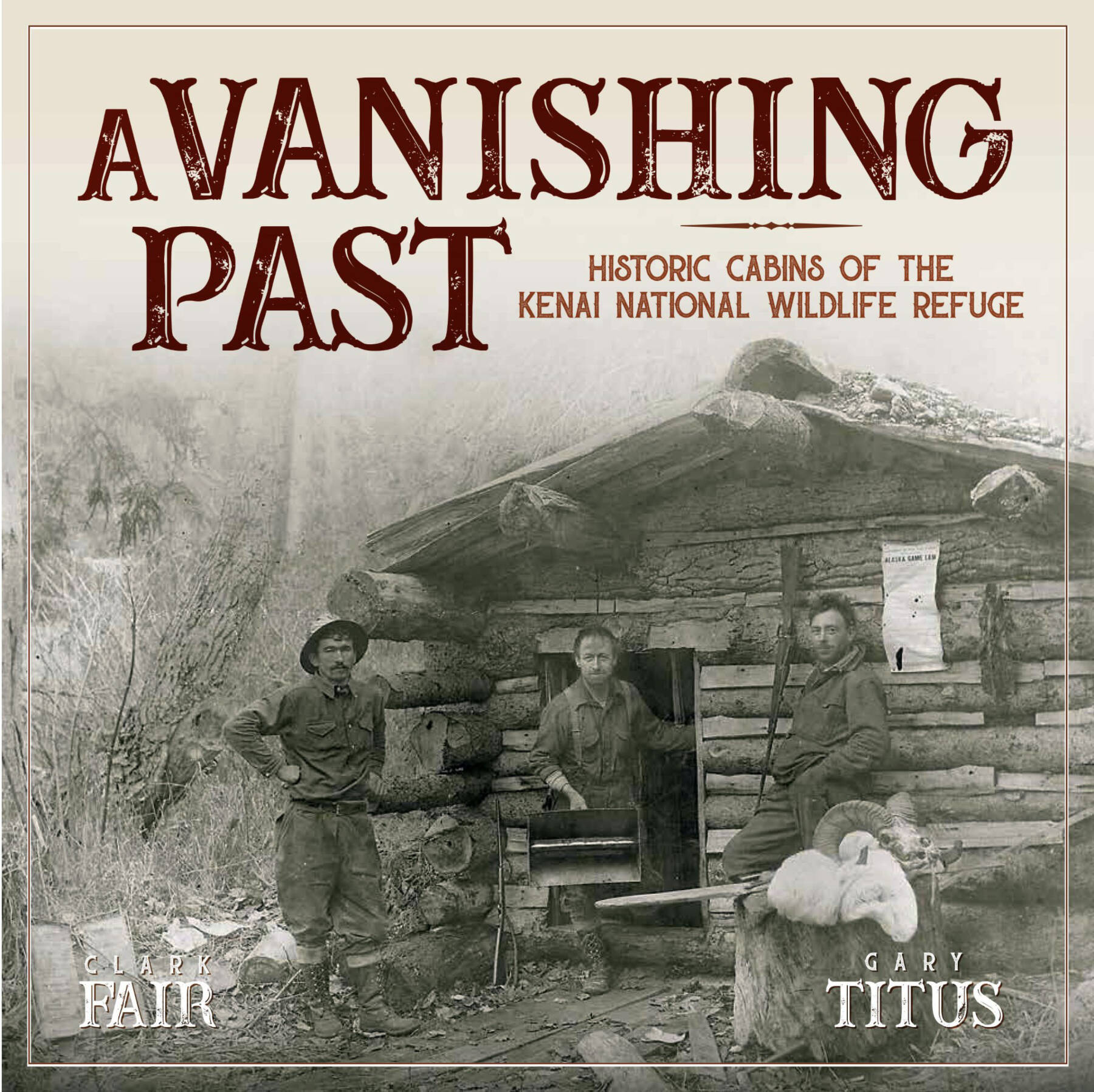Clark Fair and Gary Titus have collaborated on writing and publishing a new book that covers the complex and wide-ranging history of Kenai National Wildlife Refuge cabins. The book, “A Vanishing Past: Historic Cabins of the Kenai National Wildlife Refuge,” was published in December 2024 by Kenai Hikers Press.
Fair said Sunday that he first became aware of Titus while checking out resources from local institutions on Andrew Berg, a Finnish immigrant who came to Alaska in 1888 and who built 14 cabins on the Kenai Peninsula.
“You know when you would get a library book and there would be a little manila folder inside the cover, showing you many times the book has been checked out? Well, there was something like that in this folder, and the last person who had looked at it — and very few had — was Gary Titus.”
Fair said that after repeatedly noticing Titus’s name in resources he had looked at in his own research, he interviewed a person whose family had homesteaded Caribou Island on Skilak Lake. The person he interviewed said that the last person who interviewed him had been Titus.
“At every place I went, everything I checked, Gary had already done that. And once I met Gary, I realized that not only had he done this, but he had been all over the place.”
The two eventually connected and became friends through their mutual interest in the complex history of the Kenai Peninsula. Fair said that Titus had visited both the National Archives and the Alaska State Archives in the course of his research, looking into Andrew Berg and other historical, local figures from between the 19th and 20th centuries. When Titus suggested they write a book together, he sent a list of possible topics to Fair, who chose one that eventually led to the creation of “A Vanishing Past.”
The book is an immersive read, with large colored images illustrating the lives of the people who once inhabited these structures and detailed maps showing their locations. Fair pointed out in an interview on Sunday that the Kenai National Wildlife Refuge — which is made up of around 2 million acres of land — is a vast area to cover in one book. He said about 40% of the cabins covered in the book belonged to trappers, although they also looked at mining, hunting, homesteading and recreational use cabins.
Fair and Titus will share insights from their book at Kenai Community Library this Friday, April 4, from 4:30 to 5:45 p.m., in the community room. A book signing will follow, with books available to purchase directly from the authors.
Titus was formerly a park ranger in service with the Kenai National Wildlife Refuge since 2000, when he spearheaded a comprehensive program to restore, preserve and interpret the refuge’s historic cabins. He retired in 2015, but still spends some of his free time working to restore and preserve historical cabins on the Peninsula.
Titus will be at the Kasilof Regional Historical Association’s museum at 24117 Kalifornsky Beach Road on Saturday, April 5, from 1 to 3 p.m., doing preservation and restoration work on cabins. He will have copies of their book on hand to sell and sign.

